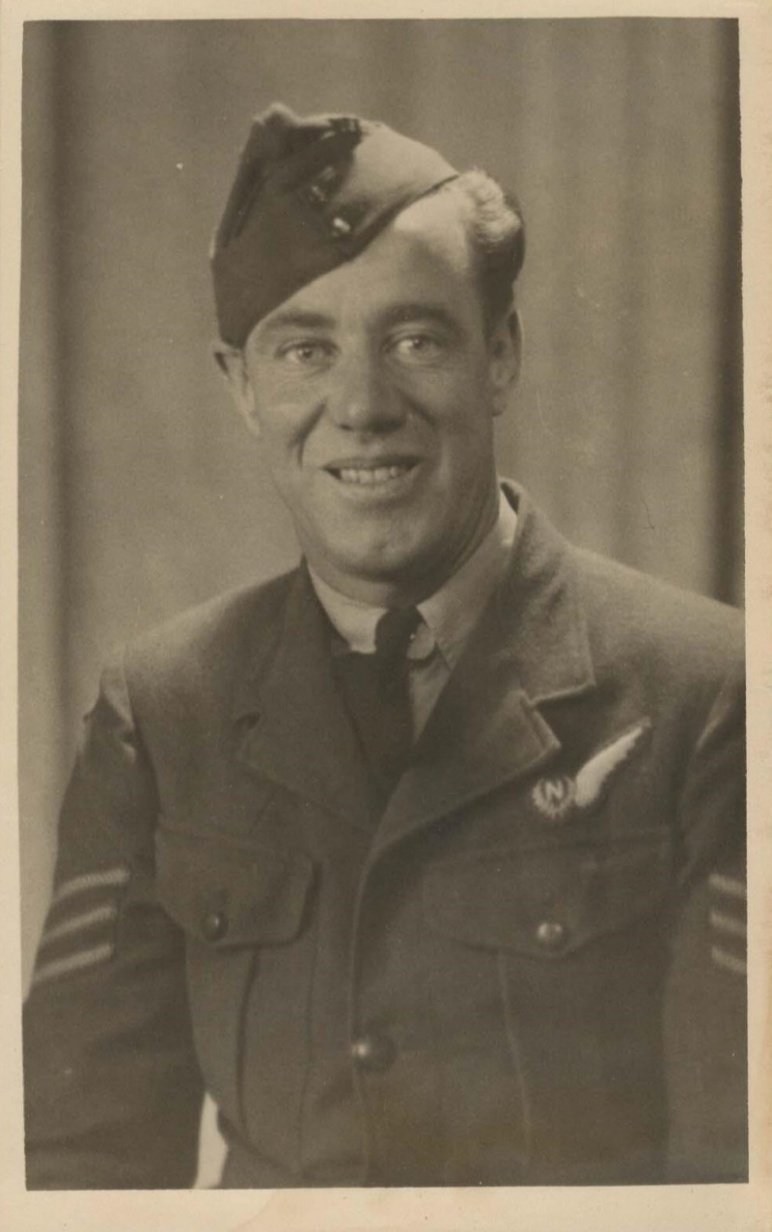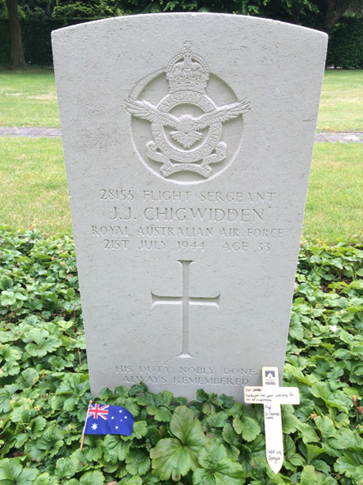There is another more uplifting story concerning war and Broken Hill. The initial incident was certainly sad, but the enduring relationship and international connection enriched the town and two families.
The land surrounding Broken Hill is harsh. But there is also beauty particularly when the rains come. The strong colours inspired artist Pro Hart to escape the gloom of the mines and capture them on canvas. Another who dreamed of escaping was Jack Chigwidden. His journey was very different. Jack’s father, Peter Chigwidden, was one of the devout Catholic families who migrated around the world, from Wales, at the end of the previous century. Peter was one of twelve children and he and his wife Kathleen ‘Kit’ added seven to the Chigwidden clan. Jack was the eldest, Jim was the youngest. Seen through the eyes of a young boy life was simple. Only later did Jim realize how desperately poor the family was. They commonly did without and the only meat they ate were the rabbits Jack and Jim caught.
It was taken for granted that as soon as they were old enough the boys would descend into the pits. Jack hated the mine, Jim recalled. It was black, filthy, stifling, claustrophobic, exhausting and dangerous. Boys as young as twelve and men as old as 65 were killed, reasons for their deaths: Fell down shaft; Explosion; Rock Fall; Crushed by Ore Truck; Lead Poisoning; Struck by Loco and more. Jack Chigwidden trained as a carpenter but there was little other work not directly involved with the mines.
For Jack Chigwidden World War II was a blessed relief, although this could never be suggested out loud. He lost no time in enlisting. Yes, there was the desire to protect the world from the Nazi rampage, but it was also an escape from the pit and an opportunity to travel to Wales the home of his forefathers which Jack could never have afforded in his wildest dreams.
He was fit and 29 and very willing to undertake anything the RAAF asked of him. There was no space left on his ‘Application for Air Crew’ forms; Jack wrote everything he could think of. He had passed his Intermediate exam but hoped they would not notice he failed maths A and B, English and Chemistry. He had attended Technical College and studied Carpentry, Drawing and Maths. He wrote ‘Timberman’ as his occupation when he enlisted in June 1940. The RAAF originally considered him for a trade. Jack failed the carpentry test. The recruiting officer wrote that Jack was:
Clean and tidy appearance. Pleasant sort of chap. Appears to have a cheerful disposition and good manners.
He recommended Jack to be an ‘Airman Guard’.
Jack stuck to his desire to be aircrew and convinced the RAAF that they should test him. Jack was graded exceptional. Considered observer material his instructor wrote:
Was so keen on the subject matter … he undertook a preliminary course on navigation. He is keen, diligent with good service spirit.
Jack Chigwidden (Chigwidden family)

In March 1943 he bade farewell to Beatrice, his wife of two months, his little brother Jim, the large Chigwidden extended family, and the strong hues of the New South Wales far west.
It was May 1944 when he and his crew joined their first operational Bomber Squadron, RAF 622. In July 1944, King George VI, the Queen and Princess Elizabeth, visited RAF Station Mildenhall. Jack was introduced and had his photograph taken with Queen Elizabeth and the Princess. To him, it was amazing that this humble bloke from Broken Hill had gone to England and met the Queen.
Jack Chigwidden is far left (Chigwidden family)

Sixteen days later Lancaster LL.859 in which Jack was the navigator was shot down over Donegen 12 kilometres north west of Tilburg, Holland on 21 July 1944. There were no survivors amongst the crew of five Englishmen, one Canadian and a bloke from Broken Hill. Flight Sergeant John Joseph Chigwidden (RAAF) 28155 was 33.
The Chigwidden family sorrow was assuaged slightly when they received a letter postmarked The Netherlands, from Annemarie Vossen. She and her husband Jan had been members of the Dutch underground and had aided Allied flyers with shelter, food, clothing, money and secreted them out of the country back to England. When the war was over, they were touched by the 77 Allied war graves in the Tilburg cemetery, graves of young men from distant countries who gave their lives for our freedom in the war. Jack and his crew were several of those. They maintained the graves and contacted many families to assure them the graves of their sons would be cared for. Jan died in 1959, and authorities agreed he could be buried with his Allied friends. Annemarie continued to ensure the graves were kept well and flowers placed.
Annemarie Vossen tending the Tilburg graves (Chigwidden)

In 1979 Annemarie Vossen travelled the vast distance to Broken Hill to visit the Chigwidden family. The lively 80-year-old marvelled at how vastly different the terrain, sunshine and colours were from where Jack had travelled and where he now lay since July 1944. The people of Broken Hill treated her royally.

When the Commonwealth War Graves Commission assumed responsibility for the graves AnneMarie and other Dutch volunteers continued to lay flowers on birthdays and maintain the family connections.
